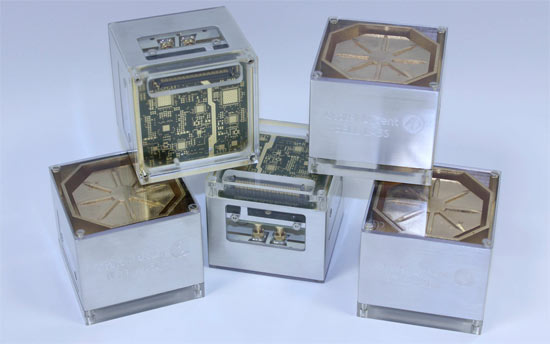I love stories that spotlight local innovators.
You’ve undoubtedly heard about lightRadio by now, those tiny, energy efficient cubes from Alcatel-Lucent (pictured above) that promise to one day replace those roadside eyesores, cell towers. What you probably haven’t heard is how Bell Labs in Murray Hill, NJ brought the concept to life.
Sarah Portlock of The Star Ledger reports on how Tod Sizer’s team fast-tracked the tech that would take Mobile World Congress in Barcelona by storm. lightRadio not only shrinks cellular antennas and the basestation — now a system-on-a-chip (SoC) co-developed with Freescale — it also “cloudifies” wireless communications, so to speak.
The device shrinks the antenna and radio devices at the top of a cell phone tower, relocating the network communications power systems — which sit at its base — to central data centers. As a result, the antenna casing can be smaller — about 2.3 inches, down from conventional antennas that are typically the size of an ironing board.
This is huge because the explosion of mobile data would otherwise cause cellular antenna arrays to get bigger and even more unsightly, not to mention draw even more power. But with lightRadio, wireless companies can leverage many of the cost and energy savings that cloud providers now enjoy and put a dent in the 18 million metric tons of CO2 that cellular basestations pump into the air every year. Plus, maintenance workers are sure to love never again having to lug heavy antennas and equipment atop poles and rooftops. A winning concept, no matter how you slice it.
So far, tests on the prototype have been a success and Verizon, Orange and China Mobile are exploring the tech.
Watch Tod Sizer explain the tech in the video below:
Image credit: Alcatel-Lucent


Leave a Reply